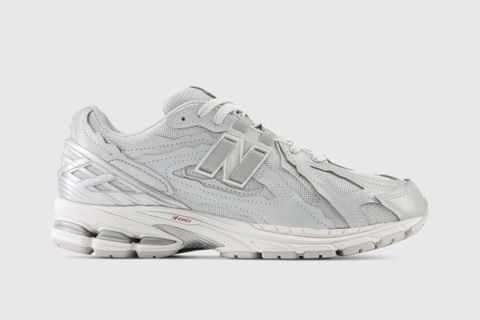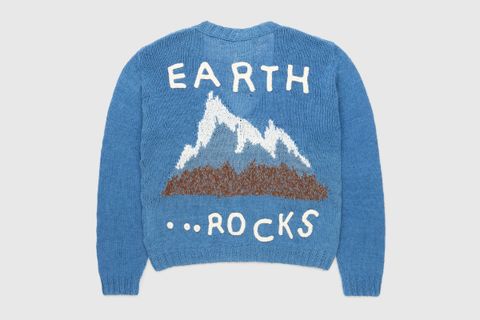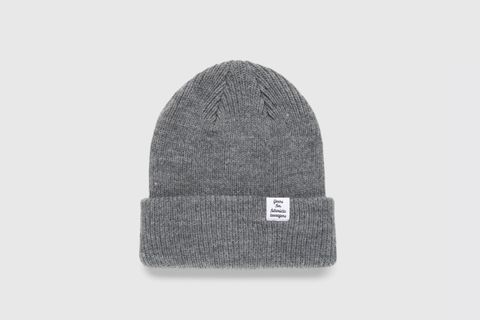Fashion Really Wants to Catch 'em All
There were times when 2023 evoked the end-of-history moment that was summer 2016, back when everyone and their grandma (literally) inexplicably came down with Pokémon Go fever.
Except this time, instead of regular folks going Poké-crazy, fashion has developed a sudden craving for everything Pokémon. And by everything, I mean the first 151 Pokémon.
But still, even the first generation of Pokémon alone has more fashion clout than any of its peers.
Really, this was the big takeaway from 2023's Pokémon obsession; it's not enough to simply point out that you got your fashion in my Pokémon and my Pokémon in your fashion because that isn't all that new.
No, it's that no other Japanese media franchise has ever crossed over into mainstream luxury fashion like Pokémon, especially the way that Pokémon did this year.
You sure don't see Goku or Astro Boy rendered in Tiffany & Co. bling. I mean, the fact that that one of the world's leading luxury jewelers created a tiny gold Pikachu, with artisanal Pokéball to match, is objective proof that 2023 is the year that Pokémon peaked, fashionwise.
Pokélove wasn't just as overt as Tiffany's collection. It snuck into the culture, unexpectedly infiltrating the discourse at large.
Sandy Liang's Salomon sneakers weren't an official Pokémon collab, for instance, but the designer claimed that the shoes' inspiration came from famously cute Pokémon Jigglypuff.
LVMH-owned fashion house Fendi, meanwhile, created a collection of fancy leather goods decorated with slightly less-famous Pokémon like Dragonite and Dratini (also from the first generation of Pokémon).
Setting aside the initial sticker shock that the average Pokémon fan is likely to suffer when attempting to shop Fendi's Pokémon line, this one isn't that big of a surprise: Kim Jones, Fendi's womenswear creative director, is famously friendly with Hiroshi Fujiwara, founder of fragment design and longtime Pokémon collaborator, who oversaw this drop.
Fujiwara played one of the largest roles in Pokémon's slow march towards fashion legitimacy. He's been pushing Pokémon in conventionally streetwear outlets — stylized T-shirts, plush figures — for years, consistently demonstrating the franchise's mass appeal.
Same for Daniel Arsham, the artist who made Tiffany x Pokémon a thing. He's masterminded his own vast assortment of Pokémoments, from his own Pikachu sculptures to various UNIQLO Pokécollabs.
Guys like Arsham and Fujiwara are the reason that Pokémon has evolved from streetwear to luxury in the span of a single year. Like, Gucci dabbled with Pokémon Go! in 2020, yes, but that was more down to Gucci's fascination with tech than a demonstration of Pikachu's stylishness.
If it wasn't for these men, there probably wouldn't be an A.P.C. x Pokémon collection, another 2023 release that seems strange — proudly ordinary French clothing stalwart meets graphic-first gaming franchise? — until you remember that A.P.C. founder Jean Touitou is good friends with Fujiwara (the Japanese creative was not directly involved in the A.P.C. x Pokémon line, mind you).
Quick break to point out an odd fact: there are currently nine generations of Pokémon, each one rolled out in line with a new game in the series (and carried through to subsequent offshoots). The first Pokémon generation is the one with Pikachu, Charmander, Squirtle, Jigglypuff, Mewtwo, and all the other most famous critters.
Perhaps that's the sole reason that every big Pokémon fashion project focuses exclusively on those initial 151 Pokémon. It's ceaseless: from COMME des GARÇONS to Billionaire Boys Club, basically every Pokémon collaboration dials in on those early characters, including the ones with Tiffany, Fendi, and A.P.C..
I mention this both as an odd quirk and also because the most familiar Pokémon characters tie in with the other big factor boosting Pokémon's visibility this year. The streetwear touch was a huge factor but the other, possibly even more meaningful wrinkle is that Pokémon, at its most visible, is big business and has been for several years now.
Pokémon cards have become as valuable as handbags, with rare specimens and unopened booster packs sometimes selling for thousands upon thousands of dollars.
The scarcity and perceived value of anything blessed by the right Pokémon's smiling mug inspired some of 2023's other big Poké-flashpoints. They aren't fashion-related necessarily but they do underscore the demand and dollar signs that allure luxury labels to tap into Pokémon.
For example, there was the bizarre phenomenon of Santa Cruz' Pokémon-themed skate decks flipping on eBay for massively multiplied retail values, simply because they were sold as blind-pull packs akin to Pokémon card booster packs.
A few months later, Pokémon's fabulously viral takeover of Amsterdam's Van Gogh Museum drew record crowds so hungry for the rare Pikachu trading card offered during the promotional period that the museum was forced to stop giving out freebies.
Tremendous demand for Pokémon collectibles even inspired similarly marketable artist Takashi Murakami to create his own line of purposely resalable cards, which he proudly introduced by mentioning that they were produced by the same manufacturer as Pokémon.
Were Pokémon still a mere cultural touchstone like Dragon Ball Z, One Piece, or Demon Slayer — three similarly popular and profitable Japanese franchises — it'd remain relegated to streetwear, at the price points that most of its fans probably prefer.
But because Pokémon has thoroughly demonstrated its moneymaking capabilities, the profit-motivated machinery of fashion has accepted it as a viable luxury partner.
Whereas these kinds of novelty franchise collaborations were once solely the stuff of seasonal oddity — Balenciaga x Hello Kitty, Gucci x Doraemon — Pokémon has proven that it's a true contender, capable of delivering on both widespread appeal and big-time pricepoints.
Maybe you actually don't have to catch 'em all — according to luxury labels, really only need those first 151 Pokémon, give or take.


